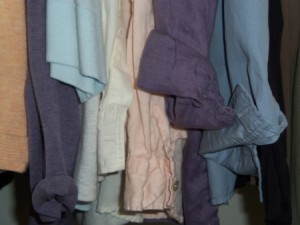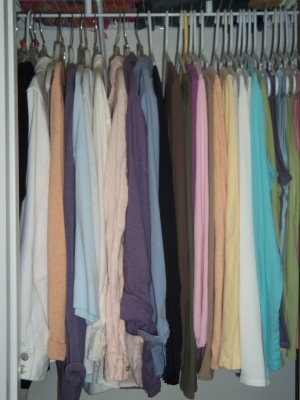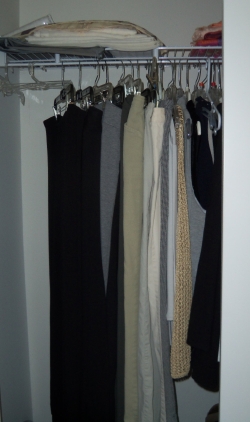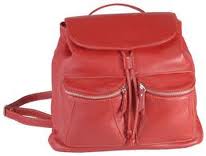Read Matt Stoller’s eye-opening article posted on Naked Capitalism, “Who Wants to Keep the War On Drugs Going AND Put You in Debtor’s Prison?” Here are just a few of the highlights. There are BIG problems with privatizing prisons. This industry has no interest in lowering the crime rate or in rehabilitation for that matter. Quite the reverse. It is about using all the cells and about expansion since this increases profits. More arrests and jail sentences are good news for this industry.
The truth is that privatized prison industry is highly motivated to bribe judges and the court system. Even home foreclosures are just one more opportunity to raise jail occupancy. Reduced state revenues or budget woes create a window to swoop in and provide their service at “reduced” cost. But is the cost really reduced? Studies on incarceration, as the article explains, have shown that it doesn’t deter crime or reduce the crime rate. Today the U.S. has more people in prisons than other industrialized countries – yet one of the highest per capita crime rates.
I believe that unfair incarceration does cost our communities billions. There are hidden costs as well. We are losing the gifts and talents of men and women while creating broken families. Parents in jail means society has to provide care for their children. A childhood that is series of foster families is not a foundation for a successful life that allows people to give back to the community. This is a VERY high cost to pay long term.
Others who are unfairly in jail, undocumented immigrants for example, create an expense rather than contributing to our society,meanwhile we stall on overhauling our antiquated immigration laws.
Michelle Alexander’s book The New Jim Crow documents how we use prisons to enslave the black/Hispanic populations and the black male population in particular. Watch her YouTube talk filmed when she was in the Twin Cities for the Racism Conference in March, 2011.
What does life in a typical prison look like? Read below Sister Carol Gilbert’s experience as an inmate and click to the Jonah House site to learn more.
Date: Sun, Jun 5, 2011>
> This is a letter from Sr Carol Gilbert detailing the first fifteen
> days at Blount County Detention Center. Carol is a wonderful
> storyteller, and the letter paints a vivid picture of her time there.
> The text of the letter is below, sent as an attachment (a Microsoft
> Word 2010 file) and can be seen by clicking on this link from the
> Jonah House web page: http://jonahhouse.org/gilbert_2011_05_25.html
> Peace,
> The Jonah House community
> jonahhouse.org
>
> May 25, 2011
> Dear Friends,
> Welcome to another of America’s gulags – this one in Eastern TN –
> the Blount County Correctional Facility in Maryville, TN!
>
> This is day number 15 and I want to begin the journey with a quote
> from Jarhead by Anthony Swofford and his experiences as a Marine in
> Operation Desert shield. “What follows is neither true nor false but
> what I know.”… and heard, saw, tasted, smelled and touched.
>
> DAY 1. Around 7:30 p.m. we are placed in a typical holding cell
> with no mattresses, 2 benches of concrete, toilet/sink combo and
> blanket given many hours later.
>
> We are taken out one by one for processing which consists of
> answering typical intake forms, fingerprints, picture and hospital
> type bright orange arm bands to distinguish us from the county folks
> wearing blue/white armbands, the de-liceing shower and stripped
> uniforms (black and white if new; shades of grey if older (the color
> everything becomes) and flip flops for shoes. The one pair of old
> socks, underpants and t-shirt must last until commissary. We were
> supposed to get two of everything but they have run out with 2-300
> extra. So no laundry bag or crate either. We make an attempt to sleep
> on the concrete slabs but it’s a long night. We tell stories, laugh,
> sing.
>
> DAY 2 – Close to 8:30 a.m. we are shackled, given an indigent bag: one
> small comb, 2 tiny bars of soap, 2 sample size packages of toothpaste,
> deodorant and shampoo. We are handed two towels and two sheets that
> I’m sure at one time were lily white.
>
> Carol, Ardeth and Bonnie are taken to the higher classification pod
> where all federal women prisoners are held. But Jackie and Jean go
> next door to the other lower classification pod – they would never
> keep all 5 of us together.
>
> We are immediately surrounded by women offering us books, shampoo,
> etc. Because the Feds pay so much to rent this space, we are to
> receive a bunk and mattress which means some now go without and sleep
> on concrete until other places can be found.
>
> The jail pod has a large day room holding 8 metal tables with a
> metal stools built in. Each table holds 4 people, for a total of 32;
> there’s one stainless steel toilet/sink, two phones with one cement
> seat, one shower in the center and a small open area. 8 cells are on
> the bottom floor and 8 on the top floor. Each cell is 6 by 12 with
> bunk beds, toilet/sink combo, small metal desk-stool, and a small
> slotted window frosted so one can’t see out. Most cells hold three
> women and sometimes 4. So far I have had only two other prisoners with
> me. 3 is crowded!
>
> This jail has no TV, no newspapers one can subscribe to or
> magazines, no greeting cards, no articles, no quotes from Scripture on
> a letter, no puzzles, no games, no books from publishers, no, no, no,
> and no! They do sell a cheap radio for $45.00 plus $10.00 for ear
> phones and $2.25 for a battery. That cost means many go without.
>
> Twice a week we are allowed to go to a cement cage outside with a
> net above to see the sky and feel the air and sun.
>
> Library cart comes once a week and each is allowed two books – a
> few good ones.
>
> Commissary is on Wednesday. A stamped business envelope is $.65 –
> $.21 for the envelope makes someone profit as does our liquid Fresh
> Mint toothpaste from India and our 3 inch toothbrushes (1 inch brush,
> 2 inch handle).
>
> Pens are only the cartridge and make writing difficult but the
> women get “vinegar bags” and use this as a tape to make them thicker.
> I’ll let you, the reader, research “vinegar bags”.
>
> Lots of commissary items are “Bob Border.” It would be interesting
> to follow the money trail for commissary. Another distributor is
> Maxima Supply, Holt, MI for hard candy.
>
> Our schedule is as follows:
> 6:00 a.m. Bright lights on
> 6:30 – 8:30 a.m. Breakfast/Meds/Day Room
> 8:30 – 11:30 a.m. Lockdown
> 11:30 – 1:30 p.m. Lunch/Meds/Day Room
> 1:30 – 4:30 p.m. Lockdown
> 4:30 – 8:30 p.m. Supper/Meds/Day Room
> 8:30 p.m.– 6:00 a.m. Lockdown
>
> When we are in the Day room, our cells are locked. There are two
> stand-up counts – around 2:00 p.m. and 10:00 p.m. the lights are
> dimmed after 10:0.m. count but still bright enough to read.
>
> Meals –
> Breakfast – 2 biscuits, Jelly, Sweet, watery Oatmeal, Carton of Milk,
> Coffee (the only exception is Tuesday when Cheerios replaces Oatmeal)
>
> Lunch – Peanut Butter Sandwich – one week Bologna-Mustard Sandwich –
> alternate weeks 1 small bag plain Frito Lays’ Chips 1 cup water
>
> Supper – Pinto Beans, Corn Bread, Cole Slaw, Mashed Potatoes/ Peas/
> Green Beans (one of these three) Jello or Package of Teddy Grahams
>
> Every other night they will serve one or the other of the food –
> Iceberg salad or Noodle dish,Mashed or French Fried potatoes Jello or
> Teddy Grahams
>
> The phone calls are from a company called City Telephone Coin and
> expensive. A study should be done on phone companies to jails and
> prison – who profits! A 15 minute limit and the call could be over
> $20.00
>
> DAY 9 – All seven of us met in an intake holding cell for Mass with
> Fr. Brent Sheldon and Deacon Juan Hernandez from Holy Fatima in Alroa.
> Maryville has no Catholic church as the Catholic population in TN is
> 2% This was the first time I ever went to mass in a holding cell and
> in leg shackles. (This jail has a practice of putting leg shackles on
> when moving outside the block no matter how short the distance.) What
> a gift to receive the Eucharist in this setting. It was here we
> learned we are not getting our mail. They claim we are getting too
> much and they don’t know how they will handle it.
>
> DAY 10 – I was taken out for my PSI (pre-sentencing investigation)
> report so both probation and my attorney were present. It appears we
> will be taken from here and moved to a holding facility in Ocilla, GA
> until sentencing which looks like late September.
>
> DAY 11 – Most of the women are here on drug charges of some kind. The
> drug of choice in this area is prescription drugs. The city is filled
> with these so called “pain clinics.” this is also a holding facility
> for women going to TN state prison. Because of such over-crowding in
> the 3 state women’s facilities, women can be held here for years! Both
> of my cell mates are poor and had terrible childhoods – drugs,
> alcoholism, lack of education, early pregnancies. Their stories and
> tears are like so many others in here and across the country. We are
> warehouses with no real help and one wonders how the cycle can end.
> They believe God sent us to them as angels. A 70 year old LPN has been
> locked up here for three years for killing her abusive husband and
> trial date is now set for late August. A disturbed, mentally ill
> woman here for 19 months awaiting her trip to state prison. The unique
> feature for us is that the women are all white! We understand the
> men’s blocks have lots of Hispanics from immigration and some blacks.
>
> DAY 12 – We were taken in shackles, down the hall to medical for our T
> tests. A great time to visit with Jackie and Jean. We were able to
> sing Jean an early Happy Birthday as she turned 84 a few days later.
> Our cell block was put on full lock-down at lunch. This means we are
> in our cells 23 hours a day with one cell out at a time for one hour.
> There was no fight but things were getting a little tense with a
> mentally ill woman and a few other women who haven’t yet learned how
> to respond in a nonviolent way. We do not know how long, but the rumor
> is two weeks. That makes for a long day and so most of these young
> women learn the art of sleeping – such a waste! The hardest part is
> that I don’t get to talk to Ardeth and Bonnie! Sometimes the entire
> block has been locked down for as long as 3 months or more.
>
> DAY 13 – Today was our first serving of FRUIT since arriving! A small
> serving of mandarin oranges never looked or tasted so good. It’s the
> little things we appreciate.
>
> DAY 14 – My first visit was from 7 – 8 p.m. through plexiglass with a
> phone. Four local peacemakers caught me up to date. These folks are
> doing the real work – SUPPORT Visits are 1 hour a week and your day
> and time of visit is determined by your cell number. Starting at
> 8:a.m. and the last visit is 8 p.m. This can make it difficult for
> someone who works and has the visit during their work hours. I heard
> on my visit that Sr. Mary Dennis has a sentencing date of September
> 21st.
>
> DAY 15 – The day is just beginning and our cell is brighter so we know
> the sun is shining even though we can’t see it. Some final thoughts
> as I close out these first two weeks.I’m learning about the South with
> their biscuits and gravy, the accents, the country music, the new
> words for grandma and grandpa of mamow and popow, the missing or no
> teeth and the Body Farm. The University of TN is home to an
> anthropology Research Facility (The Body Farm). The founder and an
> author have written a series of fiction and non-fiction on the farm. I
> read Body of Betrayal (novel) which takes place at Y-12, Oakridge.
> There are some women who talk about the cancers, the class action
> suits, the deaths from exposure of relatives and friends at Y-12. I’m
> reminded once again how simple life can be, how little we need to
> survive. That grace is given when I see these women live this day by
> day and keep a sense of sanity after months and/or years in this
> place.The effects of a country that continues to spend billions on
> bombs and prisons can be seen, felt, heard, touched and smelled in
> this space. We are well and long to hear of your stories these past
> weeks. My gratitude, love, prayers and support.
>
> Courage
> Carol Gilbert,O.P.
You may also like What is White Privilege?, Solving the Problem of Poverty and Why We Should Listen.
 This year has been a practice in living with less, living more simply and simple living. To that end I have resolved not to purchase new clothing, to use what I have and to pass along clothing I don’t use.
This year has been a practice in living with less, living more simply and simple living. To that end I have resolved not to purchase new clothing, to use what I have and to pass along clothing I don’t use.
 The left side of the closet holds yoga pants, slacks and jeans. Summer curtains are stored on the shelf above.
The left side of the closet holds yoga pants, slacks and jeans. Summer curtains are stored on the shelf above. Overhead, on the right, a few sweaters and cotton turtlenecks are stacked on the shelf. How much is enough?
Overhead, on the right, a few sweaters and cotton turtlenecks are stacked on the shelf. How much is enough? A chest of drawers holds underwear, PJ’s, socks, scarves and seasonal items like swimsuits and flannel-lined jeans (yes, I actually use/need them on super cold days). Is this too much?
A chest of drawers holds underwear, PJ’s, socks, scarves and seasonal items like swimsuits and flannel-lined jeans (yes, I actually use/need them on super cold days). Is this too much?